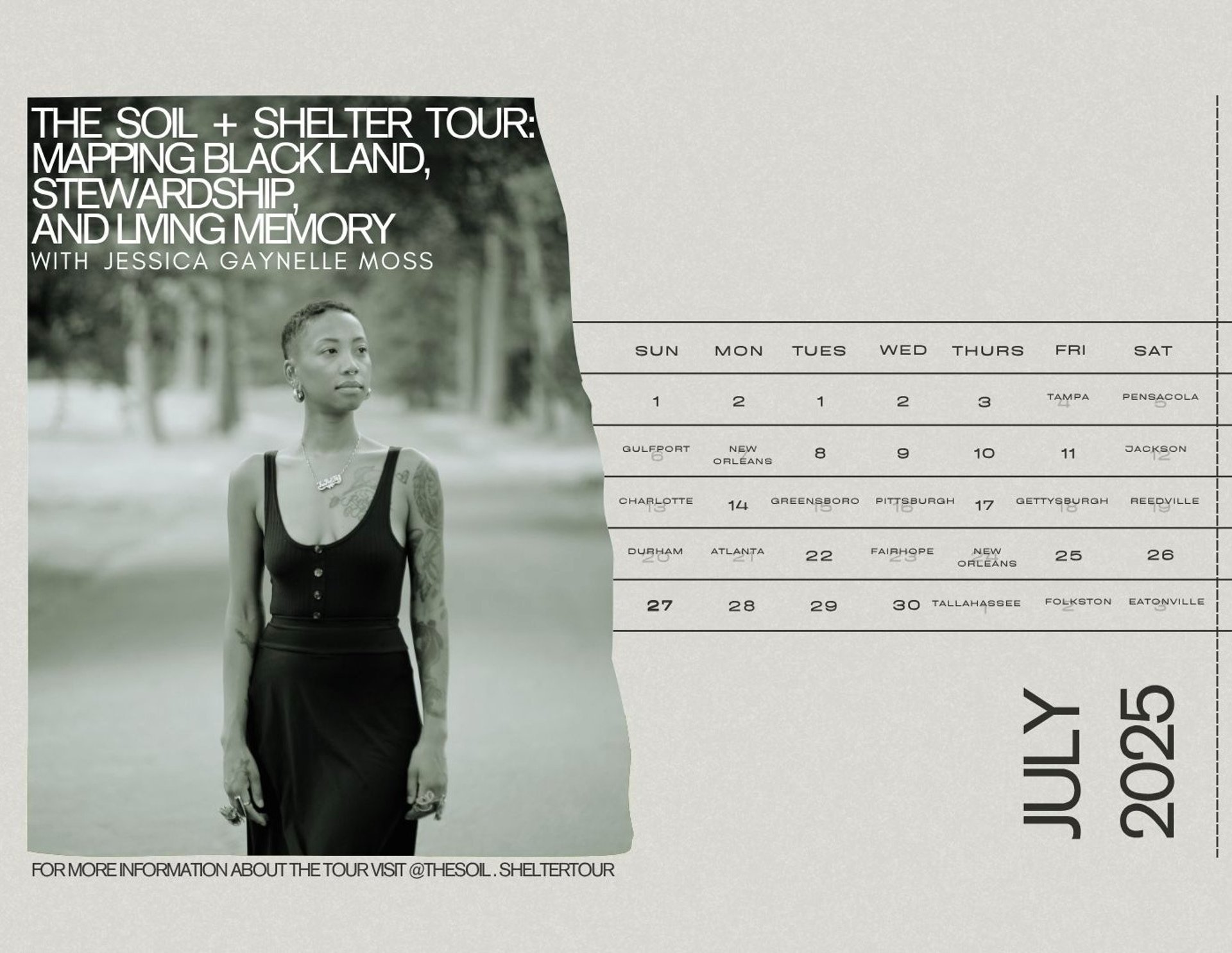
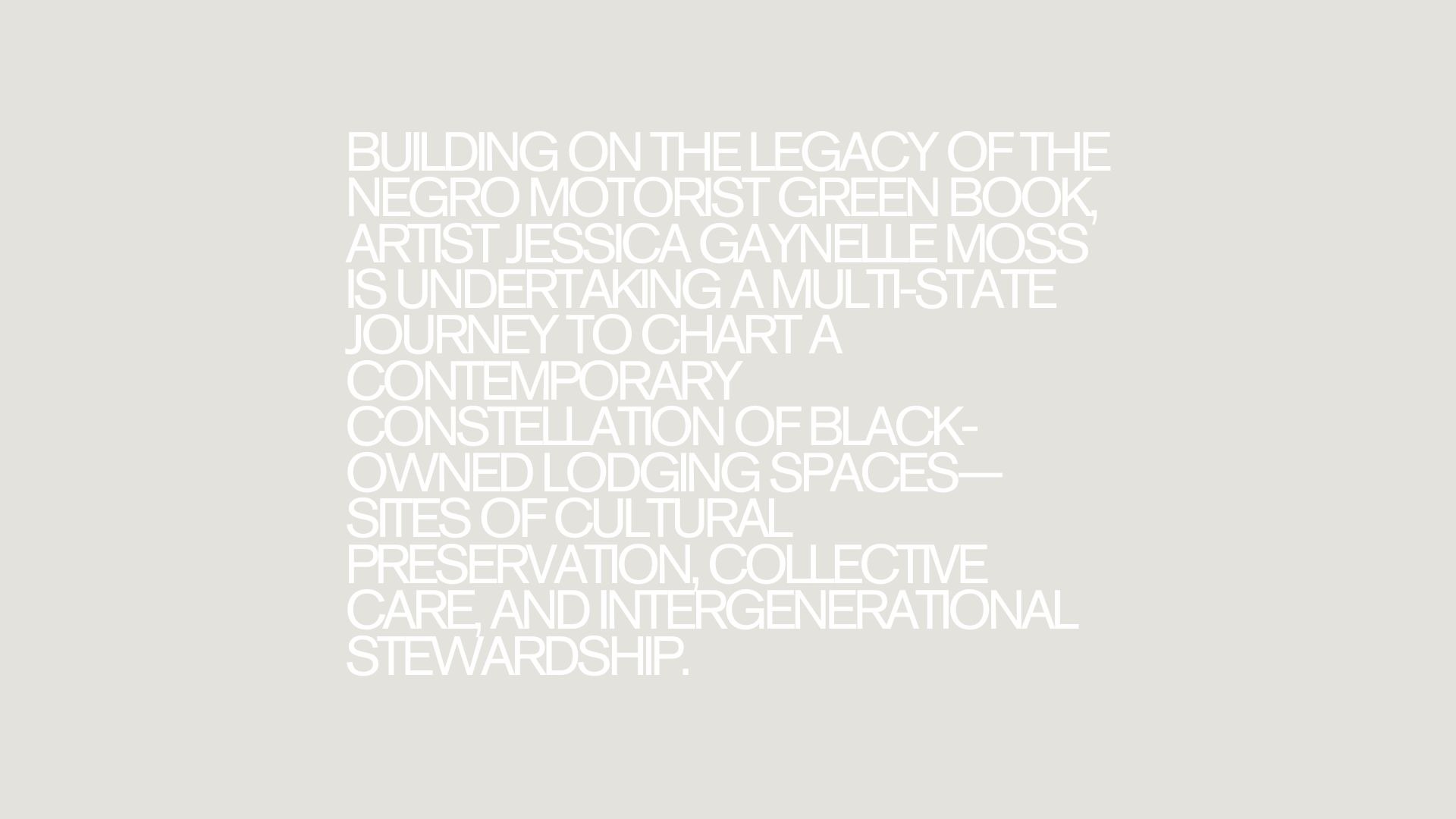
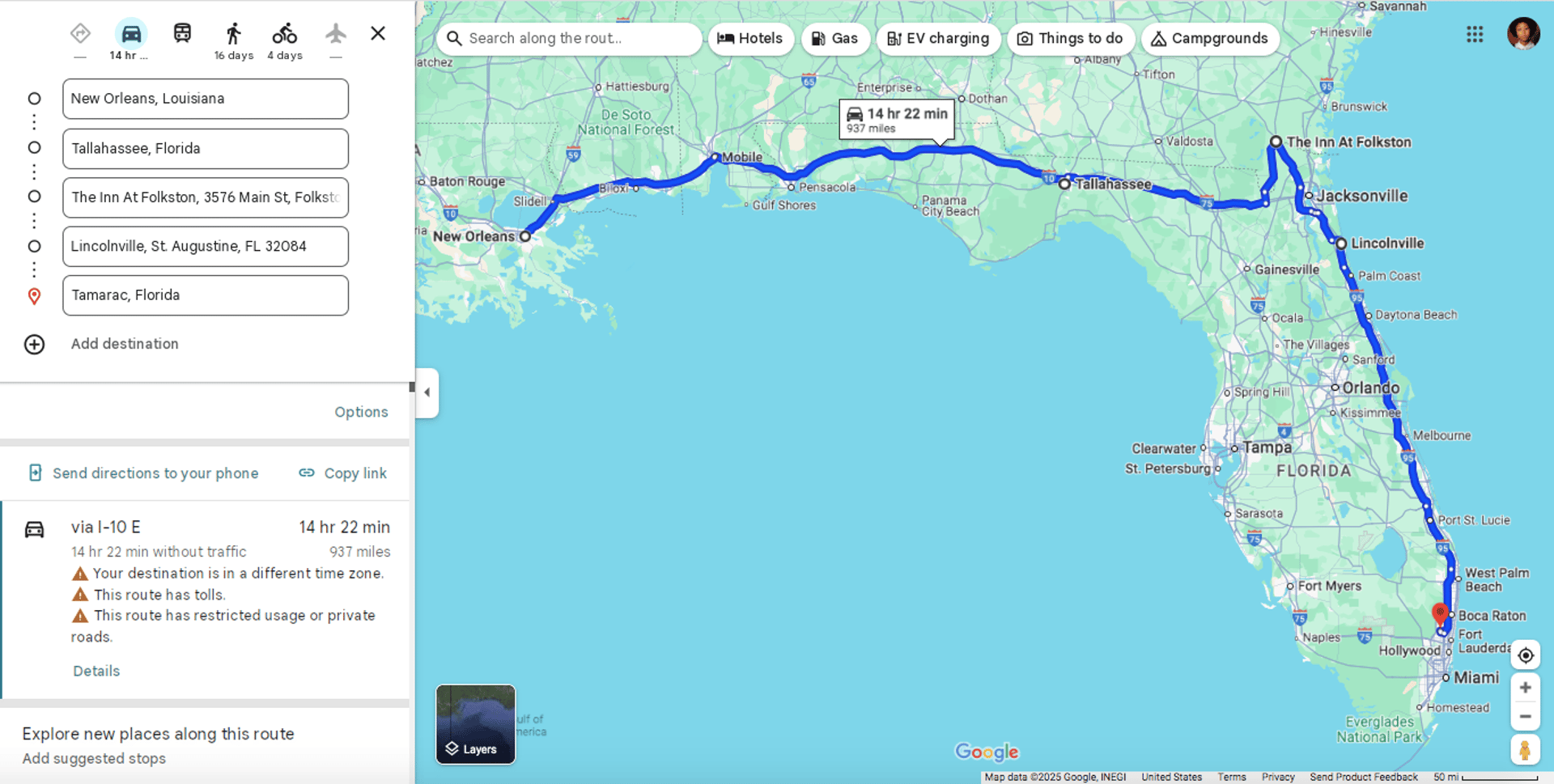
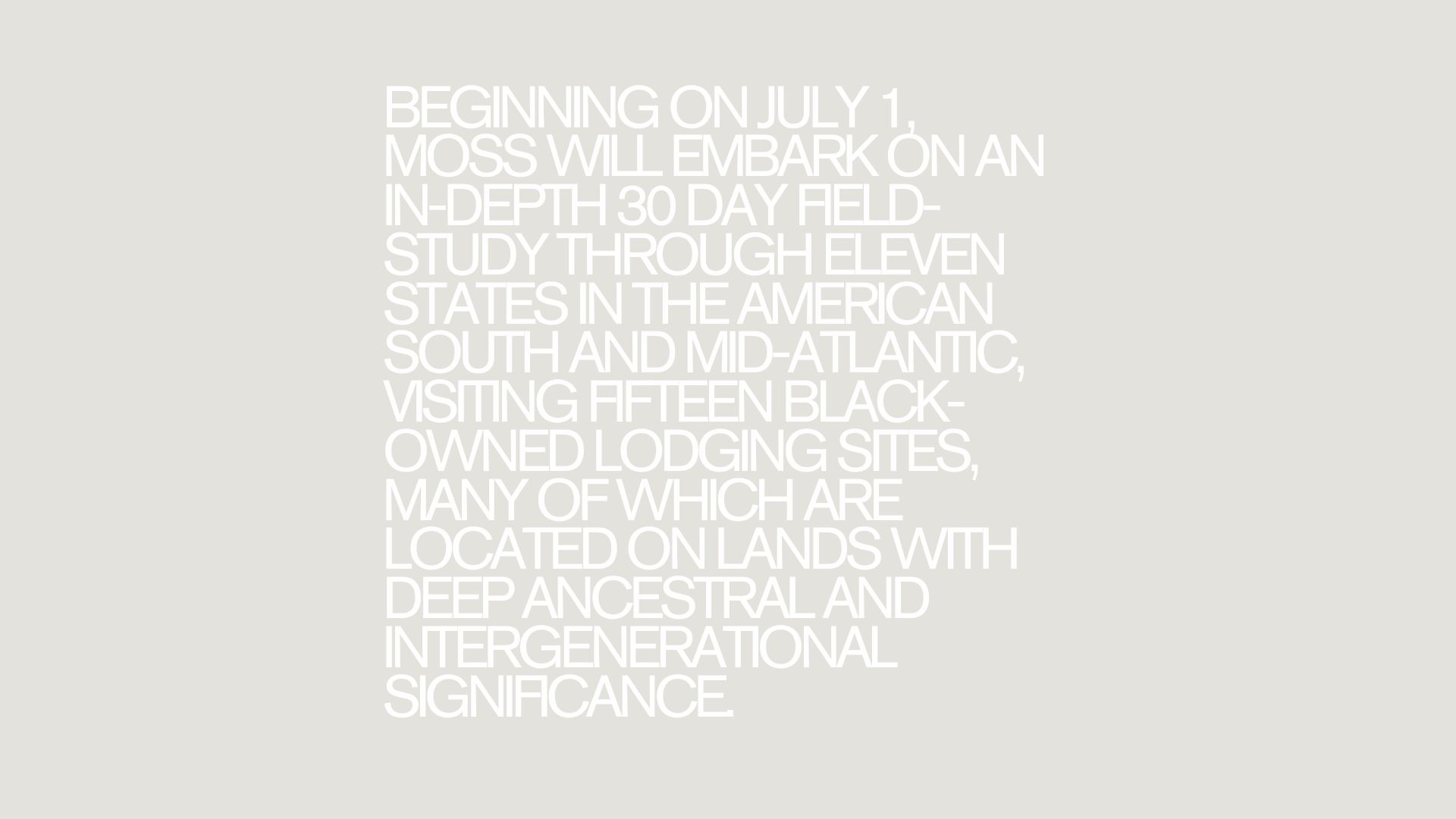
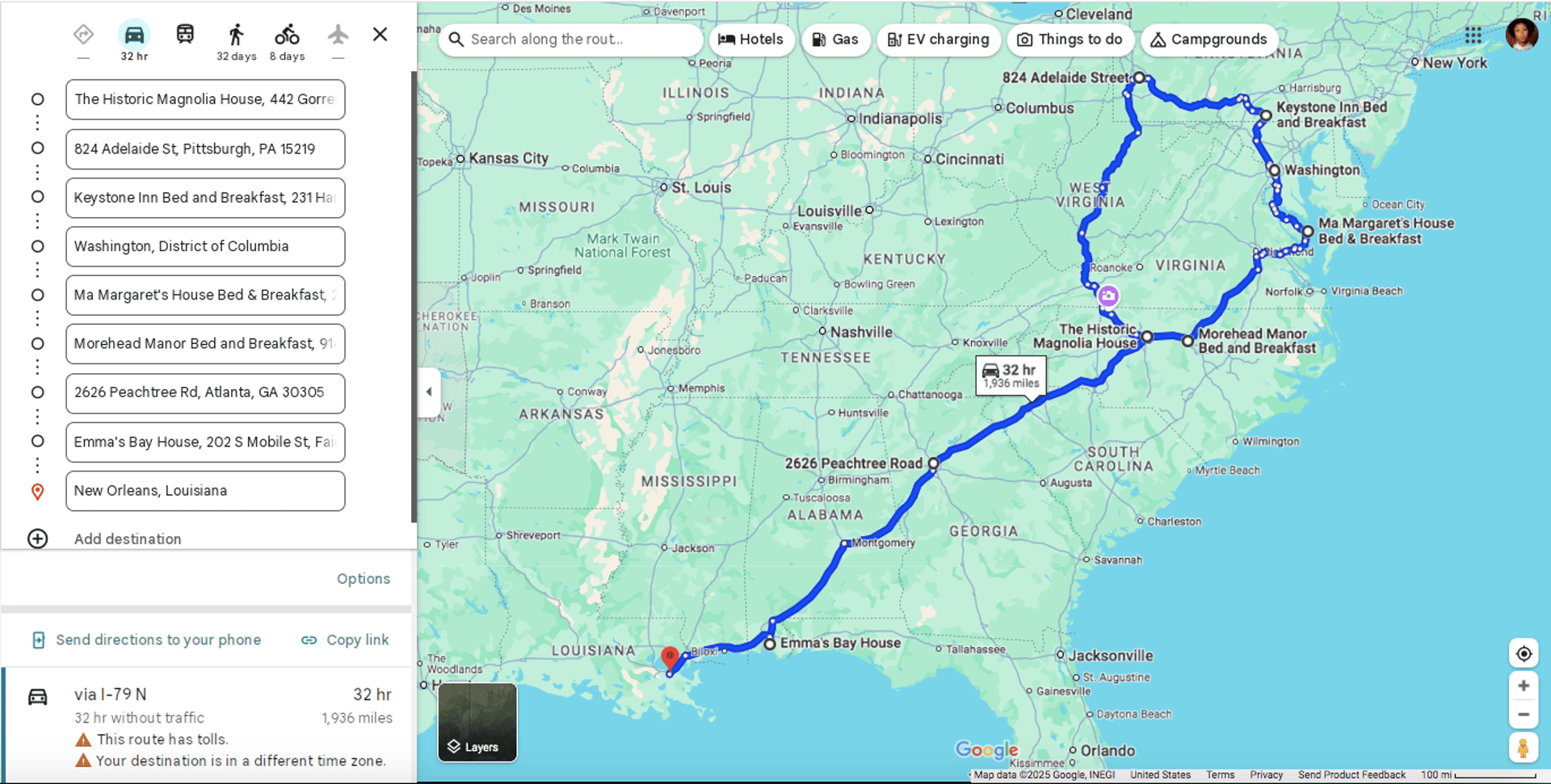
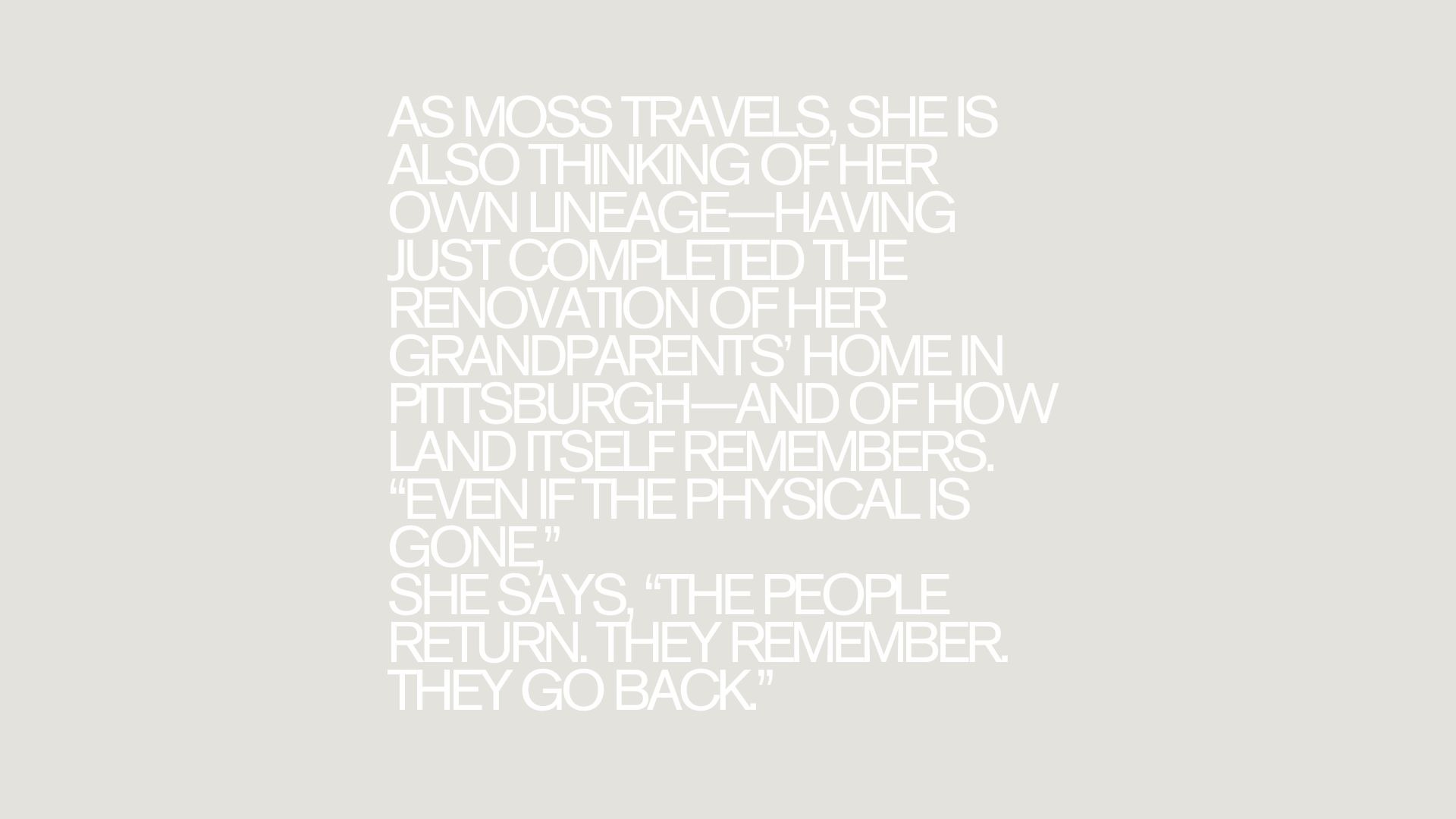
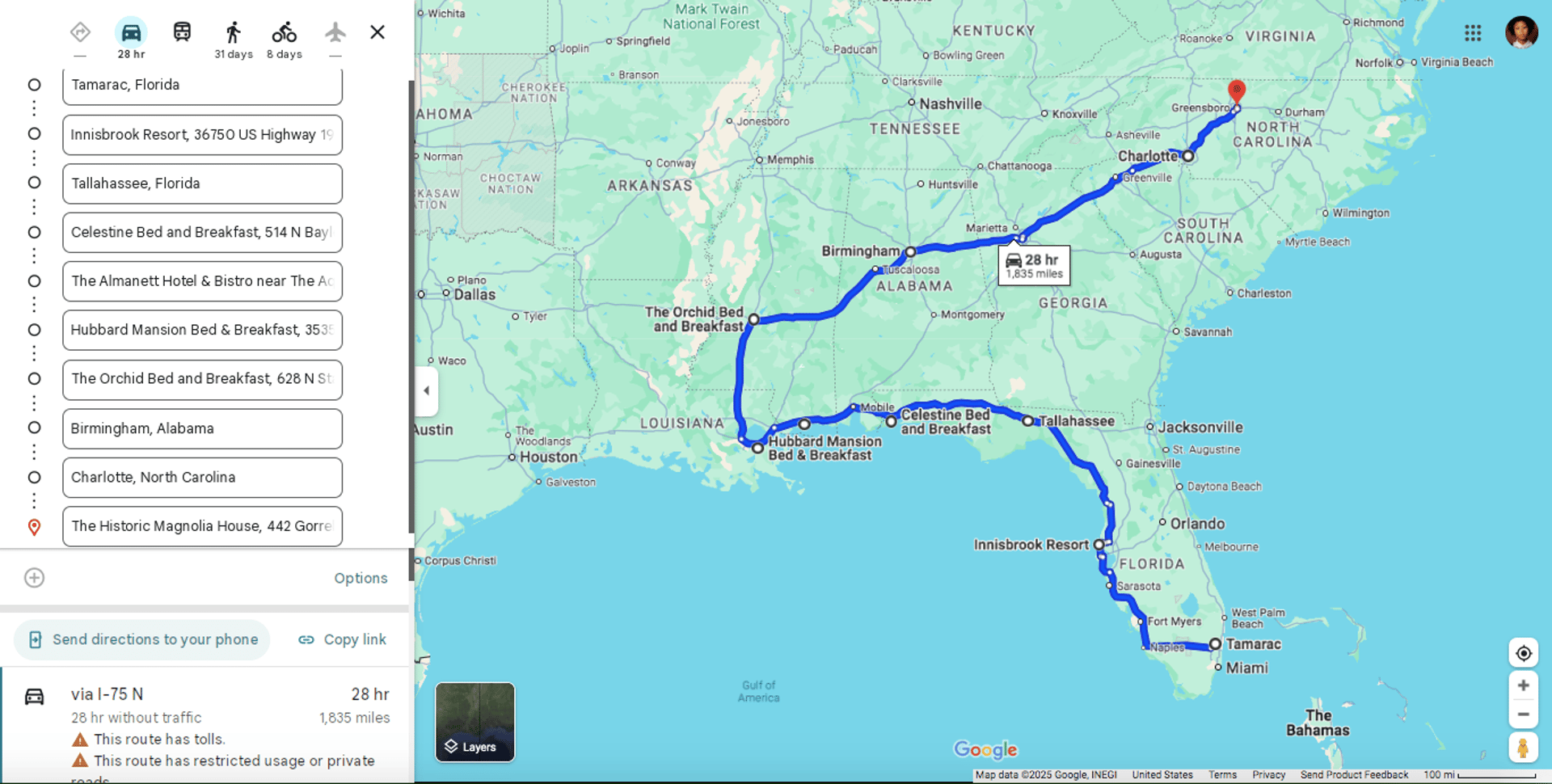
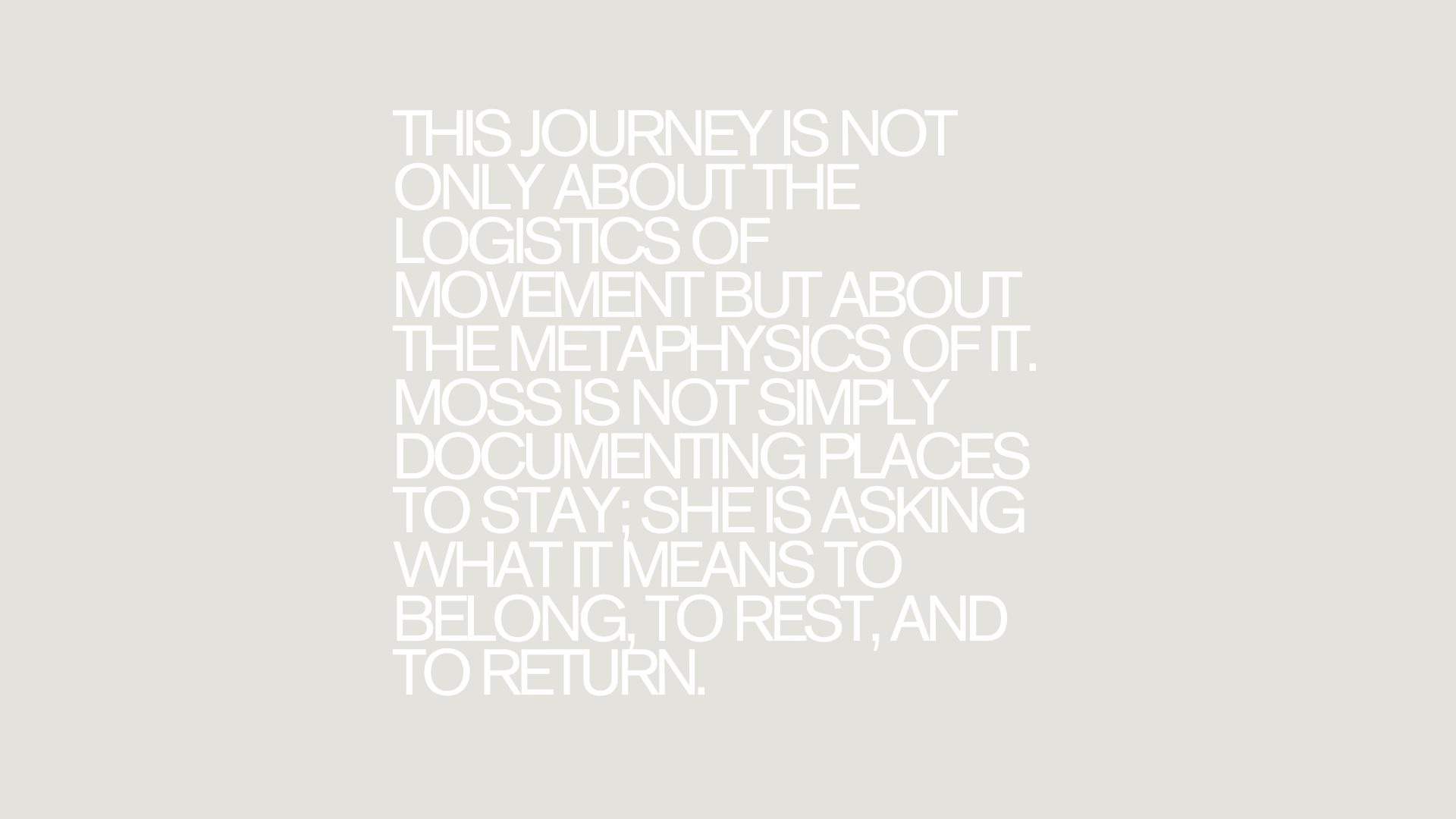
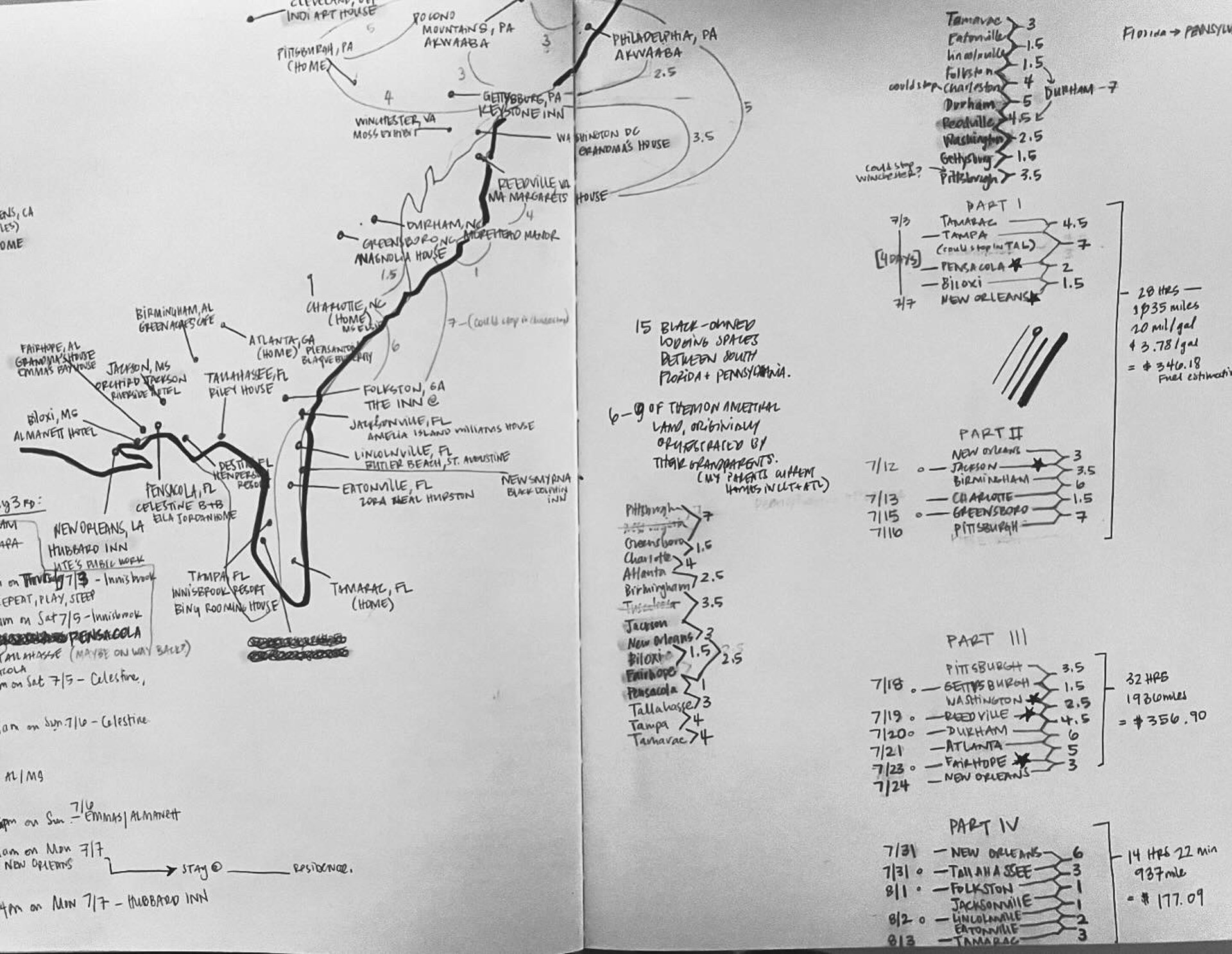
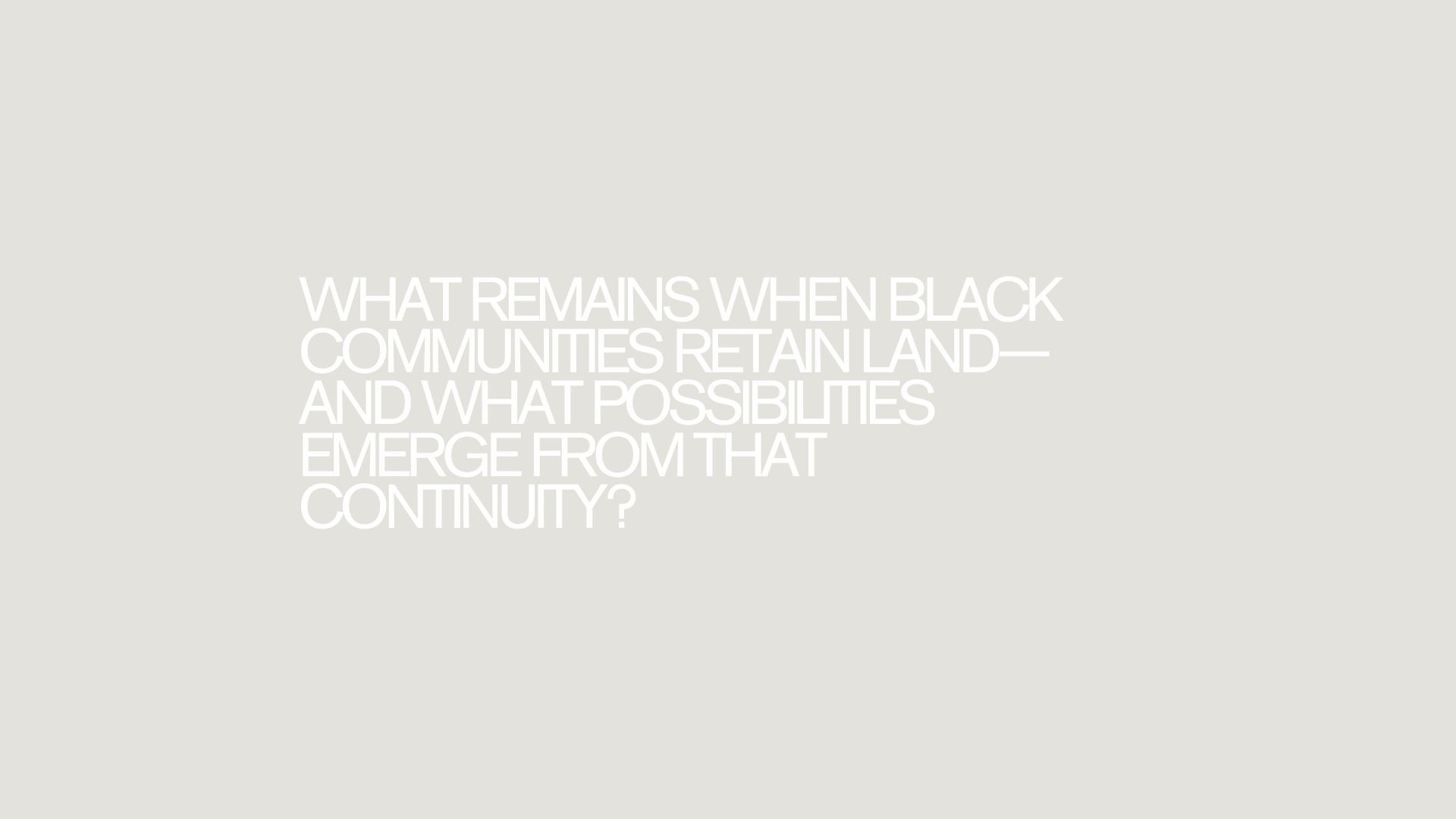
Soil + Shelter: Mapping Black Land, Stewardship, and Living Memory, 2025
This artwork by Jessica Gaynelle Moss examines the spatial, historical, and socio-political significance of Black-owned lodging in the United States, building upon the legacy of The Negro Motorist Green Book as both a tool of survival and a record of Black agency in the US. Through a 30-day field study spanning 11 Southern and Mid-Atlantic states— from Florida to Louisiana to Pennsylvania – Moss documents a contemporary network of 15 Black-owned inns, bed-and-breakfasts, and lodging sites, many of which are located on land with deep ancestral and intergenerational significance.
Historically, Black-operated lodging functioned as a critical infrastructure of care built by Black people due to the country's failure to provide safety, access, or protection. These boarding houses, rooming homes, and roadside motels provided not only physical shelter, but a temporary escape against violence as well as a foundation for localized economic autonomy. Later, civil rights legislations expanded, providing formal access to previously restricted accommodations for Black people, however, integration also accelerated the decline of many Black-owned lodging businesses. Lacking access to capital, franchising, and preservation resources, many of these spaces were sold, demolished, or absorbed by gentrification and urban renewal projects.
Rather than dismissing these spaces as vestiges of segregation, Moss positions them as active infrastructures of Black futurity—sites where care, memory, and autonomy continue to be practiced. This project frames travel not simply as movement, but as a site of inquiry into the conditions under which safety is made and maintained by Black people in transit. It examines how race, geography, visibility, and historical memory intersect to shape Black mobility, and foregrounds the practical strategies Black travelers employ today—from pre-mapping safe routes and securing basic resources to navigating risk through proximity, discretion, and relational presence.
This inquiry into land, memory, and spatial belonging builds on over a decade of work. Moss’s practice centers spatial justice, cultural preservation, and intergenerational care. From The Roll Up CLT, a neighborhood-based artist residency now in its seventh year, to The Garfield PGH—a recently launched short-term artist lodging space developed through the transformation of her grandparents’ home in Pittsburgh’s Hill District—Moss consistently treats space not as the backdrop to culture, but as culture itself. Her interdisciplinary approach merges legal infrastructure with material exploration, moving fluidly between real estate law and land art, speculative mapping and estate planning.
Moss’s methodology integrates field research, material collection, oral history, and participatory workshops rooted in the speculative ethos of Octavia Butler’s 1993 Parable of the Sower, an eschatologic novel where collective survival is made possible through intentional community-building. The workshops, previously hosted in cities including St Louis, New Orleans and Philadelphia, invite participants to consider preparation not just as a reaction to crisis, but as a method for imagining and building new futures. The survival kits created in these workshops blend practical tools (first aid supplies, emergency plans) with symbolic ones (memory, ritual, kinship).
This research will culminate in a 2026 exhibition comprising photographic documentation and foraged material works that function as speculative cartographies—fragments of a geography intelligible only through shared memory and cultural context.
